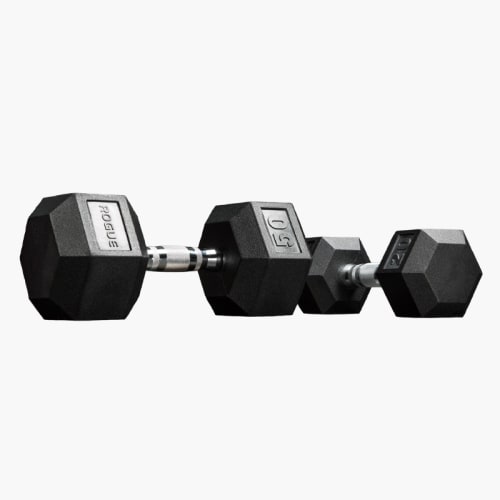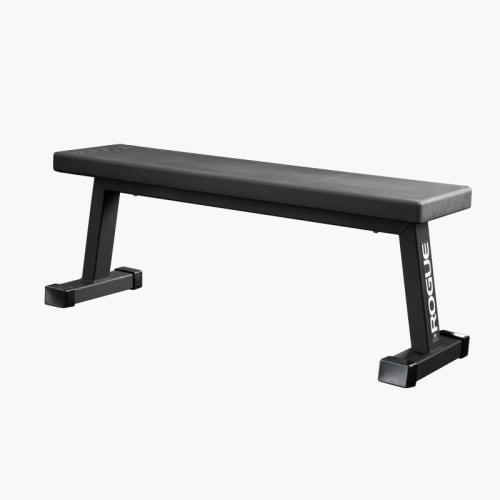How To Perform The One Dumbbell Bulgarian Split Squat
The one dumbbell Bulgarian split squat, also known as the offset rear foot elevated split squat, is a very effective lunge variation that can be extremely beneficial for training with a minimal set up. In this article I will talk through the benefits of the one dumbbell Bulgarian split squat and also discuss the key points surrounding the technique.
Get weekly roundups of the best training tools in your inbox, every Monday.
No spam – just thoughtful training advice
- Equipment Required for The One Dumbbell Bulgarian Split Squat
- Benefits of The One Dumbbell Bulgarian Split Squat
- Minimal Equipment Set Up
- Core Exercise
- Holiday Training
- No Access to Light Weights
- Key Technical Points for The One Dumbbell Bulgarian Split Squat
- Weight Placement
- Keeping the Shoulders Square
- This Is An Advanced Exercise
Equipment Required for The One Dumbbell Bulgarian Split Squat
Benefits of The One Dumbbell Bulgarian Split Squat
Minimal Equipment Set Up
The main benefit of the one dumbbell Bulgarian split squat is that it only requires one dumbbell, which is often the case for those training with minimal equipment. Ruling out this excellent lunge variation due to the fact that you only have one dumbbell would be a shame. For individuals who want to have the most minimal training set up possible whilst still having some access to external load, having one dumbbell can be a great option.
Core Exercise
Due to the fact that the dumbbell is on one side of the body, the core musculature is required to work a great deal harder than if you were using two dumbbells. This is because you must resist against the lateral flexion that the dumbbell is pulling you towards. This essentially turns the one dumbbell Bulgarian split squat into an equivalent to a suitcase hold , making it both a lunge exercise and a core exercise at the same time.
Holiday Training
When on holiday we can often find ourselves with strange training set ups, be it a relatives house or a hotel gym. This is where these kinds of exercises can be extremely beneficial. It is very rare that you would opt to use the one dumbbell Bulgarian split squat when you have access to a full set of dumbbells, but during travel this often isn’t the case.
No Access to Light Weights
When we do not have access to lighter dumbbells, which are dumbbells that we might typically use for the Bulgarian split squat, the one dumbbell Bulgarian split squat can be a great option. This is simply because using one heavy double could be equivalent to using two lighter dumbbells that you do not have access too.
Key Technical Points for The One Dumbbell Bulgarian Split Squat
Weight Placement
The weight should be placed in the hand on the side where the foot is planted on the bench. This will allow more space for the dumbbell and create a cleaner, more controlled movement.
Keeping the Shoulders Square
As mentioned above, this is also a core exercise due to the uni-lateral nature of the placement of the dumbbell. This means that not only does the lunge need to be performed correctly, but also the core aspect of the movement. This means that the shoulders need to be kept square throughout, by this I mean the shoulder on the side that is holding the dumbbell cannot fall towards the floor while the opposite shoulder lifts upwards due to the weight of the dumbbell.
This Is An Advanced Exercise
Do not consider this to be easier than the Bulgarian split squat because it is just as advanced if not more advanced due to the core component of the exercise. You should only be selecting this exercise if you are experienced in the lunge movement pattern and have build up a base level of strength to be able to perform this exercise with control.
If you enjoyed this resource you can find more below or try Programme, a fitness app that plans every workout for you – based on your progress, equipment and lifestyle.
This resource was written by Sean Klein. Sean Richard Klein has thousands of hours of coaching experience and a BSc in Sports Science with Management from Loughborough University. He owns a gym in Bayonne France, CrossFit Essor, which runs group classes and a Personal training studio.
Sean Klein



